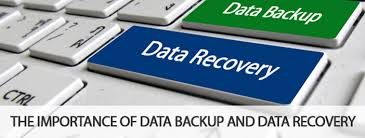Is your facility prepared to weather the winter storm?
 Is your facility prepared to weather the winter storm? Power loss, cold temperatures, snow, wind, ice, and a host of other potential problems need to be considered and addressed now to ensure your facility will run safe and smooth through the winter season.
Is your facility prepared to weather the winter storm? Power loss, cold temperatures, snow, wind, ice, and a host of other potential problems need to be considered and addressed now to ensure your facility will run safe and smooth through the winter season.
Here is a checklist full of tips to dull the impact of harsh winter conditions on facilities and buildings:
1. Prevent slips and falls: One of the biggest concerns in winter for building occupants is falling on icy walkways. Deicers keep snow from sticking to the ground and increase the surface temperature enough to prevent ice from forming. Apply these in anticipation of each store to keep people safe from injury. 
2. Protect surface areas – inside and out: Consider the impact deicing agents may have on walkways, carpeting, floors and even the plants around the building. Careful use of ice melt products can minimize damage to these surfaces. Also, consider installing quality, absorbent floor mats to help keep ice melt residue from being tracked into the building.
3. Evaluate winter maintenance costs: The salt and urea-based ice melt products available range in effectiveness and cost. Take for example rock salt, which is the most common and the least expensive. However, it can be slow to melt and harmful to vegetation alongside walkways. Since labor is the biggest cost of winter maintenance, make product effectiveness your primary consideration. Factor in product availability and disposal costs and order winter maintenance products well in advance to ensure best selection and price.
4. Guard your technology and data: Winter weather can result in costly power outages due to ice and wind. It is critical to back-up all company and client data daily, either onsite or through a hosted, off-site cloud service. Cloud services include benefits such as speedier recovery times, resulting in improved business continuity and revenue. They also offer decreased energy consumption while reducing the amount of space that is required to house storage servers. In addition, always check to make sure your back-up system is working properly before a storm hits. 
5. Avoid electrical shutdowns: If you are at the office when an outage occurs, turn off all computers and other equipment as a precaution against the sudden increase in voltage when power is restored. In those instances when no one is present, it is key to ensure all computers and electrical equipment are connected to surge protectors, which act as more than just a power strip, but absorb excess electrical energy and prevent it from reaching connected equipment. Determine if your office requires individual surge protectors or a large building surge protector with battery back-up. For data centers, it is recommended to use an uninterruptible power supply (UPS). UPS units prevent a power shut-down that could cause business disruption or data loss, and also help to maintain the proper temperature and moisture control that is critical for data centers to operate efficiently.
6. Review your telecommuting protocol: In case employees are unable to safely get to work during or after a storm, make sure they are able to connect with the office remotely. Arm people with log in instructions and protocol and suggest they test it out before the storm hits. Consider implementing a telecommuting program with technology and furniture solutions for employees in advance of the winter season.
Winter brings problems and pitfalls to facilities that can be prevented with diligent preparation – don’t neglect weatherization procedures for your building.
Staples Advantage / Buildings 2018
